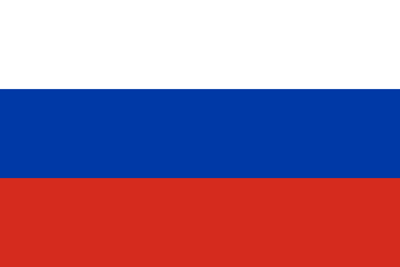Part 2.
TOPIC 5. Algorithm for Writing Redox Reaction Equations
When writing redox reaction equations, it is important to follow a specific sequence:
-
Identify the oxidizer and the reducer among the reactants.
To do this, it is first necessary to assign oxidation states to the elements and compare their redox properties.
2. Write the products of the reaction.
A correct determination of the reaction products will depend on your knowledge of the atomic structure of the elements, their properties, and the properties of their compounds. It is important to remember that in interatomic and intermolecular redox reactions, free oxygen is generally not released. Oxygen is released when peroxides react with strong oxidizers, as well as in some reactions involving ozone and fluorine. For example,
2KMnO4 + 5Na2O2 + 8H2SO4 = 2MnSO4 + 5O2↑ + 5Na2SO4 + K2SO4 + 8H2O
SiO2 + 2F2 = SiF4 + O2↑
PbS + 4O3 = PbSO4 + 4O2↑
In other cases, oxygen atoms from the oxidizer (or reducer) molecules combine to form water molecules with the involvement of H+ ions, for example:
HNO2 + HI = NO + I2 + H2O
When writing reaction products, it is necessary to consider the environment. Remember that in acidic environments, salts of monovalent, divalent, and trivalent cations—chlorides, bromides, sulfates, nitrates—are formed. To create an acidic environment, diluted sulfuric acid is usually used. Hydrochloric and nitric acids are less commonly used to acidify, as nitric acid itself is an oxidizer, and hydrochloric acid has reducing properties in the presence of strong oxidizers. An alkaline environment is typically created using solutions of KOH or NaOH. In alkaline conditions, acids and acidic oxides cannot form, only salts are produced. To avoid errors when writing reaction products, you should first write the oxidation and reduction products, and only then include other substances whose oxidation states do not change during the reaction.
Nitric Acid.
When nitric acid reacts with metals, depending on its concentration and the metal's activity, nitrates, water, and various products of acid reduction are formed, as shown in the table below.
| Metals | HNO3 Concentration | > 60% | 30–60% | < 60% |
|---|---|---|---|---|
| Active (Li–Zn) | NO, NO2 | NO2, N2, N2O | N2, NH3, ammonium salts | |
| Medium activity (Cr–Sn) | No reaction | NO, NO2, N2O, NH3 | NO, NO2, N2O, NH3 | |
| Low activity (Pb–Ag) | NO2 | NO | No reaction | |
| Noble metals (Au, Pt) | No reaction |
Sulfuric Acid.
Diluted sulfuric acid is not an oxidizer and reacts with metals like any other acid. If the metal is located before hydrogen in the electrochemical series, hydrogen is released upon interaction with the acid. If the metal is located after hydrogen in the series, no reaction occurs.
Concentrated sulfuric acid, when reacting with active metals (up to Zn), is reduced to S and H2S, while with less active metals (located after hydrogen or near it in the electrochemical series), it is reduced to SO2. Noble metals—gold (Au) and platinum (Pt)—are not oxidized even by concentrated sulfuric acid. Active metals such as Al, Fe, and Cr are passivated under normal conditions and do not react with concentrated H2SO4, but reactions are possible when heated.
Test.
-
A redox reaction is:
A) Interaction of potassium with water;
B) Interaction of potassium oxide with water;
C) Interaction of carbon dioxide with calcium oxide;
D) Decomposition of aluminum hydroxide. -
Oxidizers in chemical reactions:
A) Do not change oxidation state;
B) Increase oxidation state;
C) Decrease oxidation state;
D) Do not participate in the chemical reaction. -
The oxidizing ability of halogens decreases from top to bottom in the group:
A) Increases
B) Decreases
C) Remains unchanged
D) Halogens are not oxidizers -
Sulfur acts as an oxidizer in a reaction with:
A) Oxygen
B) Metals
C) Chlorine and fluorine
D) Nitric acid -
In the reaction with the equation: 3P + 5HNO3 + 2H2O = 3H3PO4 + 5NO, phosphorus:
A) Is oxidized
B) Is reduced
C) Accepts electrons
D) Does not change oxidation state -
A substance that acts as both an oxidizer and reducer is:
A) Fluorine
B) Sodium permanganate
C) Sodium chromate
D) Sodium sulfite -
Oxidizers can be substances with:
A) The highest oxidation state
B) The lowest oxidation state
C) An intermediate oxidation state
D) In their free state -
The photosynthesis process that occurs in nature is a:
A) Combination reaction
B) Decomposition reaction
C) Redox reaction
D) Substitution reaction -
The oxidation state of chromium in potassium chromate is:
A) +3 B) +6 C) 0 D) +2 -
Bromine is a reducing agent in a chemical reaction if its oxidation state:
A) Increases
B) Decreases
C) Remains unchanged
D) Becomes 0 -
5H2O2⁻ + 2KMn⁺7O4 + 3H2SO4 → 2Mn²⁺SO4 + 5O₂↑ + K₂SO4 + 8H2O
The key substances are listed.
Reducer: O₂⁻ – 2 e = O₂
Oxidizer: Mn⁺7 + 5 e = Mn²⁺ -
3P⁻3 + 8HMn⁺7O4 → 8Mn⁺4O2 + 3H₃PO₄ + 4H₂O
Key substance missing on the right: H₃PO₄ (oxidation product of PH₃)
Reducer: P⁻3 – 8 e = P⁺5
Oxidizer: Mn⁺7 + 3 e = Mn⁺4 -
Cr₂(SO₄)₃ + 6KMn⁺7O4 + 16KOH → 2K₂CrO₄ + 6K₂MnO₄ + 3K₂SO₄ + 8H₂O
Key substance missing: K₂MnO₄ (reduction product of KMnO₄)
Reducer: Cr⁺3 – 6 e = Cr⁺6
Oxidizer: Mn⁺7 + 1 e = Mn⁺6 -
2N⁺2 + 3KCl + 2KOH → 2KN⁺5O₃ + 3KCl⁻ + H₂O
Key substances are listed.
Reducer: N⁺2 – 3 e = N⁺5
Oxidizer: Cl⁺1 + 2 e = Cl⁻1 -
P⁻3 + 8Ag⁺1NO₃ + 4H₂O → 8Ag⁰ + H₃PO₄ + 8HNO₃
Key substance missing: H₃PO₄ (oxidation product of PH₃)
Reducer: P⁻3 – 8 e = P⁺5
Oxidizer: Ag⁺1 + 1 e = Ag⁰
Training Lesson: Adjacent and Vertical Angles
Report on the Educational Roundtable: "Bravo, Parents!"
"School as a Zone of Health: Implementing Health-Saving Technologies in Education"
Material and Technical Support for Teaching Literature: Resources, Equipment, and Digital Tools

 Deutsch
Deutsch
 Francais
Francais
 Nederlands
Nederlands
 Svenska
Svenska
 Norsk
Norsk
 Dansk
Dansk
 Suomi
Suomi
 Espanol
Espanol
 Italiano
Italiano
 Portugues
Portugues
 Magyar
Magyar
 Polski
Polski
 Cestina
Cestina
 Русский
Русский